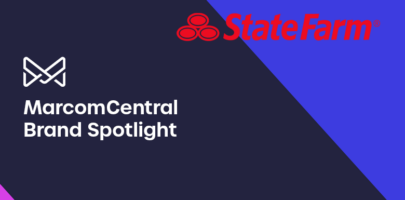- What Is Brand Identity?
- Mission Statement
- Visual Branding
- Website Design and Content
- Social Media Marketing and Advertising
- Customer Service Interactions
Get news, updates, and insights delivered straight to your inbox.
5 Important Aspects of Brand Identity to Maintain Brand Equity

As an organization, your brand is everything. It’s what makes you recognizable to your customers and potential buyers and helps set you apart from your competitors. Building a brand is one thing but maintaining your brand identity as your organization continues to grow is another.
What Is Brand Identity?
A Brand identity includes visual elements such as colors, design, and logos, it also includes corporate messaging and mission statements. To put it simply, it’s what you, your customers, and prospective customers are presented with when they come across your brand. Brand identity is how your brand is percieved by the market. The various elements that make up a brand’s identity are called brand assets. These assets all help contribute to making a brand recognizable.
So, why is brand identity so important when it comes to brand asset management? A strong brand identity helps tell your company’s story and can create brand loyalty. This happens through brand consistency. Take Apple for example. With its undeniably recognizable logo, sleek products, and focus on triggering emotional appeal through innovation and creativity, it’s no surprise that the tech giant has contiuously grown. This is why Apple’s consumers are willing to pay more for an iPhone or airpods than other competing products. Additionally, Apple’s brand strategy exudes a feeling of inclusivity. From having a unique and specific operating system for all of their products to the hype surrounding their product releases, these elements of Apple’s brand created an aura that other brands should strive to match.
You might not realize it at first but having a strong brand identity is essential to maintaining brand equity. Brand equity is the public’s perceived valuation of a brand. When the elements of your brand identity create a coherent picture of your mission and values, customers are left with a positive impression of your company. This helps to drive brand awareness, expands your market, generates new revenue, and creates opportunities for growth. When both brand identity and brand awareness are in a strong position, you build customer-based brand equity. If a company has high brand equity, consumers are more likely to trust and recommend the company to their peers, building a solid foundation for brand loyalty and increasing exposure.
So, what are the key aspects of brand identity that can help build and maintain brand equity? Here’s what you should focus on:
1. Mission Statement
A mission statement declares the purpose of an organization and serves as your brand promise to the loyal customer. It typically includes a general description of the organization, its function, and its objectives. Essentially, a mission statement is intended to clarify the “who,” “what,” and “why” of a company.
Why does a strong mission statement help maintain brand equity? A mission statement is the heart of your business, no matter if it’s a small startup or a global brand. It’s the guiding light on your organization’s path of existence. With a clearly articulated mission statement, you position yourself in a certain way to the surrounding community. Whether it be your employees, potential partners, or customers, these parties will all look to your mission statement to determine their perception of your brand.
2. Visual Branding
Your audience makes a visual impression of your brand in a matter of seconds. Visual branding is made up of every part of a brand that you can see. This includes the brand logo, color palette, typography, imagery, and graphic elements. Once your audience becomes familiar with these elements, they will forever associate them with your brand identity.
Imagine if you received a package one day from Amazon and it no longer had the classic black text with the orange arrow underneath. What if it had blue text and the arrow was now on top? You’d probably be a little thrown off. Because visual branding creates such a strong impression through familiarity, any unperceived inconsistency can greatly hinder your organization’s brand equity. To help maintain brand consistency, use brand asset management software. The implementation of marketing asset management will also help everyone in your organization easily access marketing materials across the organization.
3. Website Design and Content
Where does website design and content come into play when it comes to brand equity? As previously mentioned, achieving the perfect balance of web design and content can be tricky, as you want to provide your audience with a superb user experience. Do you present your audience with the information in a clean, organized manner? Or, do you reveal your content in sections broken up with various graphics to create an enticing trail for your audience to scroll through? When determining how to display your content on your website, do what makes the most sense for your brand’s mission and what your organization wants to achieve. This also applies to email marketing, where it can be challenging to engage with your targets and break through the noise. By presenting your target audience with content in the most intuitive manner, you have a much better chance of gaining not only a new customer who understands your brand message and has a strong brand association, but also a new advocate for your organization. Building brand strength with consumer perception is how you create positive brand equity.
4. Social Media Marketing and Advertising
Twitter, Facebook, Instagram, LinkedIn. It’s hard to imagine what the world was like before social media channels took the internet by storm. Not only has social media as a platform given individuals a new medium for sharing content with their friends, family, and peers, but they have also given businesses a new opportunity to reach their target audience.
Just as an organization’s website design affects its brand equity, so too do its efforts on social media. When a brand decides to pursue a social strategy, their voice must be consistent with the organization’s messaging, brand guidelines, and consumers’ perceptions of the brand.
5. Customer Service Interactions
Let’s face it, your organization would be nothing without its customers. As customers use your product or service and get the results they expect, they will become loyal to your brand. But even with a great product or service, a bad customer service experience can create a negative brand equity situation. This could result in a customer who was once loyal to your brand now avoiding your company and potentially going to a competitor. To help maintain your brand’s equity, keep your customers top-of-mind so you can maintain your brand’s best advocates.
The secret sauce to maintaining your brand’s equity lies within its brand identity. Consistent branding materials are vital for complying with brand standards. By having a strong mission statement, consistent visual branding, intuitive website design and content, cohesive social media marketing and advertising, and positive customer service interactions, your brand value will certainly benefit.
This blog post was originally published on December 18, 2019


